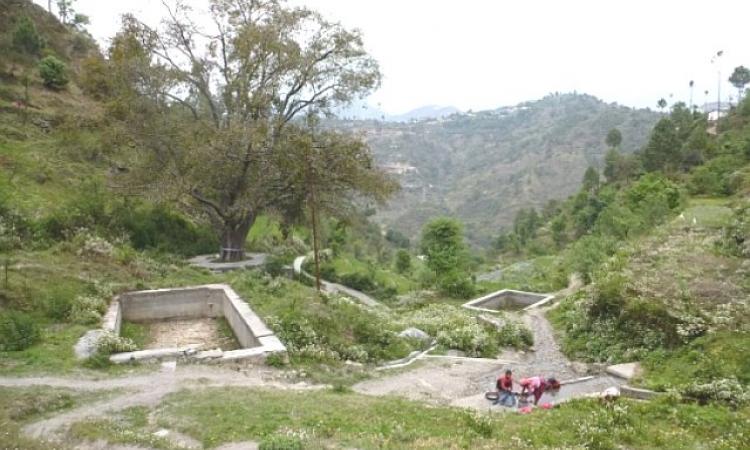
“Sometimes I go for open defecation, sometimes I use the toilet. It’s not like I always have to use the toilet. When I go for work here and there, I defecate in the jungle,” says Renu from one of the remote villages in Tehri Garwal district of Uttarakhand when asked why she does not use latrines every day.
Although there is a government-constructed latrine with a water tap that she and her family use when they are at home, she sees no point in coming back home to use the toilet when she goes out to graze animals or to collect firewood a long way into the jungle.
While attempts to improve sanitation in India focus on increasing the number of toilets and on changing behaviours, it is essentially taking a myopic view of the situation by ignoring the different and often rough lifestyles of the people in the remote villages and the lack of proper infrastructure there.
A study--Exploring the “remote” and the “rural”: Open defecation and latrine use in Uttarakhand, India--in the journal World Development finds that this everyday reality shapes the sanitation behaviour of both men and women in Tehri Garhwal district of rural Uttarakhand, classified as one of India’s 254 backward districts with high rates of open defecation.
The study done in four remote villages of the district finds that rather than the lack of awareness or motivation to use toilets, remoteness of the villages--not only in terms of accessibility and lack of infrastructure but economic, political and cultural marginalisation, lack of political support and skewed public policies--influence people’s sanitation practices.
Livelihoods determine sanitation behavior of the villagers
Agriculture, transhumance and outmigration are the only livelihood activities of people living in these isolated villages. Transhumance, a type of nomadism or pastoralism, is common in these mountainous regions, where people move along with their livestock between mountain pastures in warm seasons and lower altitudes for the rest of the year. People maintain a chappar or hut one to three kilometres uphill of their village. While some families spend a few months in the chappar to look after their livestock or tend to their crops, some visit the chappar daily. These work routines often require men and women to stay away from their homes, forcing them to resort to open defecation irrespective of whether they have a toilet at home or not.
Difficult terrain makes toilet construction a costly affair
Mountainous terrain, poor roads and distance of the villages from big markets make materials such as cement, bricks and sand expensive due to time and labour involved in delivering them. Villagers have to purchase raw materials from nearby towns and hire mules or cars to ferry them to their village for toilet construction. This increases the cost, a deterrent compared to the ease of going for open defecation.
Water supply to the latrines is a challenge in hilly terrains
Access to piped water from a treated source is very poor in the villages. The villages have only two short-term water and sanitation interventions in their area--one from the state government’s rural water supply project called Swajal and the other from a non-profit organisation named Himmothan Pariyojana.
Only one village has a community water supply with an improved water source from which water drawn through pipes can be connected to household taps. However, this water supply is often compromised when pipes break during monsoons or when springs dry during summer. Other three villages have spring-fed water tanks and for many of the villagers who stay on steep mountain slopes, getting a piped water connection to their latrines is not only difficult but also very expensive. Hauling water for flushing of the latrines and post defecation cleaning from the community or public taps are also very difficult for villagers.
Villagers rather prefer to take their chores to the water source than hauling water over long distances to complete them. It is common for women to wash clothes near the public or community tanks and many villagers defecate at a distance from natural water sources such as springs. Getting water to latrines by hand is only done while using latrines at night or during emergencies.
Inaccessibility of the villages makes it difficult to empty filled pits
Villagers say that latrines get filthy due to filled pits as village latrines are not sewer connected as in cities. Inability to empty filled pits due to the lack of infrastructure such as proper roads is an issue that people in the villages recurrently face. Latrine use is thus restricted, sometimes kept under lock and key and only the elderly and children are allowed to use them.
Corruption and lack of accountability lead to unused latrines
Villagers say that the existing water and sanitation interventions are incomplete or are often temporary. Poor follow up and low subsidies prevent people from taking up toilet building as the actual construction costs are high and many of the people are unable to cover the remaining costs of building a latrine. Corruption and lack of accountability deter villagers from utilising the full benefits of these interventions that often promise more than they deliver, leaving many with open pits or unusable latrines.
The study argues that remoteness can produce unique circumstances and constraints that can influence sanitation practices such as open defecation in villages like Uttarakhand. Rather than blaming individual behaviors, policies need to focus on improving factors that lead to this physical and social isolation among remote communities. Infrastructure development including better roads, water supply, reliable electricity and transport will help to improve connectivity, aid livelihoods and reduce socio-spatial inequalities that sustain open defecation.
A copy of the paper can be downloaded from below: